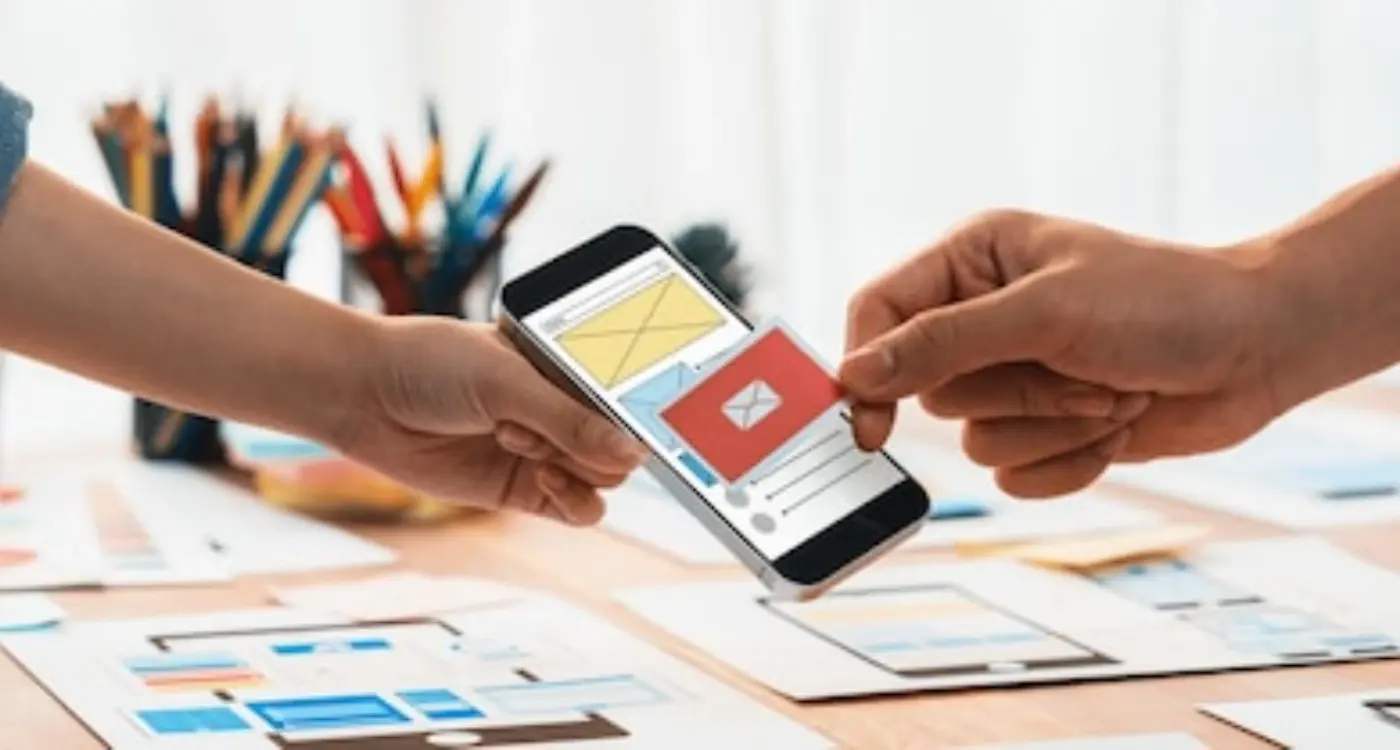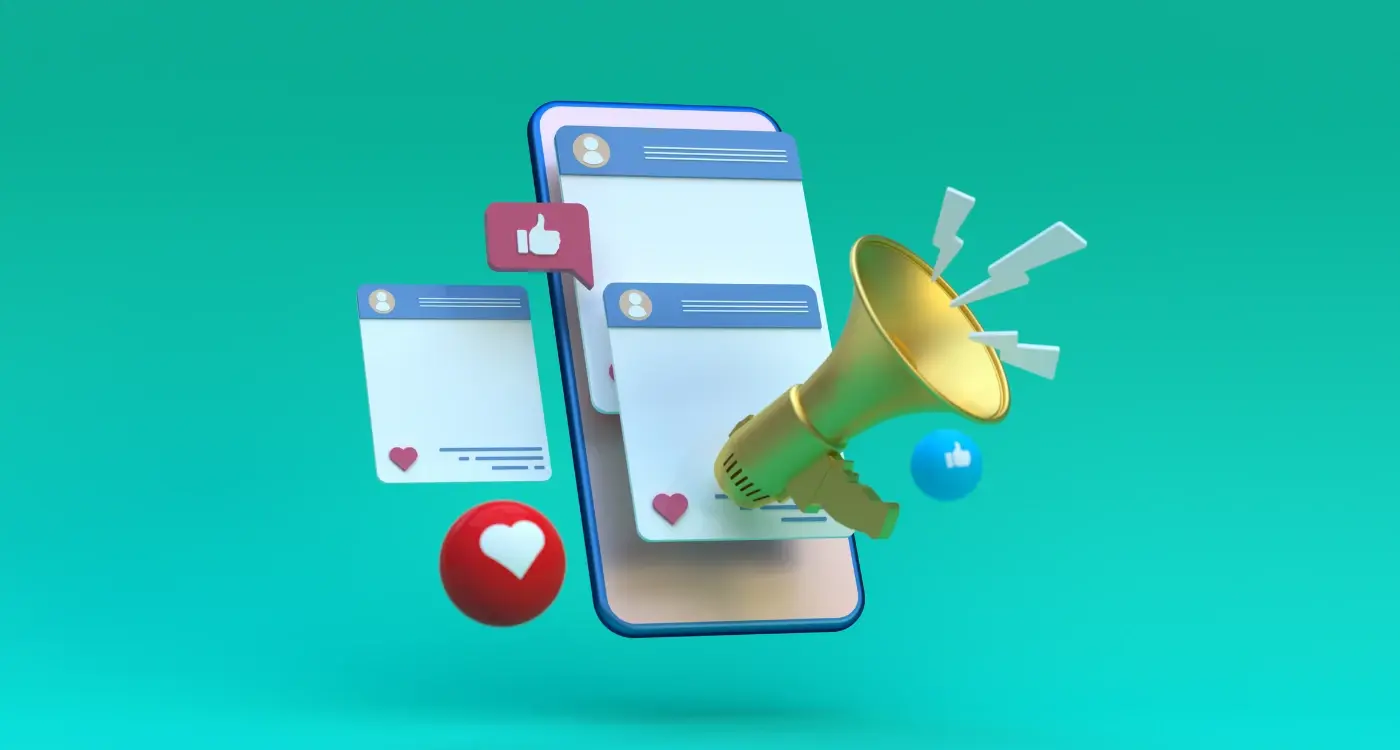How Do You Create Email Campaigns That Drive App Downloads?
Most app developers spend months perfecting their product only to watch it disappear into the app store abyss—getting fewer than 50 downloads in its first week. It's genuinely heartbreaking to see. I've watched brilliant apps with solid functionality and great design struggle to find their audience, while mediocre apps with smart marketing strategies rack up thousands of downloads. The difference? Often it comes down to how well they've planned their email marketing strategy before launch.
Email marketing remains one of the most effective ways to drive app downloads, yet most developers treat it as an afterthought. They'll spend weeks debating button colours and navigation flows, then fire off a quick email to their mates hoping for the best. But here's the thing—email campaigns for app downloads work completely differently to regular marketing emails. Your recipients can't just click a link and make a purchase; they need to leave their email, find your app in their app store, wait for it to download, then actually open it. That's a lot of friction.
The best app download campaigns don't just sell the app—they sell the experience users will have once they start using it
Over my years building apps for everyone from solo entrepreneurs to major brands, I've seen which email strategies actually move the needle on download numbers. Some approaches work brilliantly for getting initial downloads but terrible for user retention. Others might get fewer immediate downloads but bring in users who stick around for months. Understanding these nuances can make or break your app's success in those critical first few weeks after launch.
Understanding Your App's Email Marketing Potential
Right, let's get one thing straight from the start—email marketing isn't dead, and anyone telling you otherwise hasn't looked at the numbers lately. I've worked with clients who've built entire app businesses on the back of smart email campaigns, and honestly? It still surprises people how effective it can be.
Here's the thing about email marketing for apps: it's not just about sending out a "download our app" message and hoping for the best. That approach died around the same time people stopped clicking on banner ads. What works now is building genuine relationships with people who actually want to hear from you.
When I'm helping clients understand their app's email potential, I always start with a simple question: what value can you provide before someone even downloads your app? If you're building a fitness app, maybe it's weekly workout tips. For a finance app, it could be budgeting advice or market insights. The key is giving people something useful that naturally leads them towards wanting your app.
The Numbers Don't Lie
Email marketing consistently delivers one of the highest returns on investment across all marketing channels. We're talking about £30+ for every pound spent when it's done right. But here's what most people miss—the real power isn't in that first download email. It's in the follow-up sequence that turns downloads into active users.
I've seen apps get thousands of downloads from email campaigns, only to watch their retention rates plummet because they treated email as a one-and-done marketing tactic. The apps that succeed use email throughout the entire user journey, from initial awareness right through to keeping people engaged months after they've downloaded.
Your app's email marketing potential depends entirely on how well you understand your users' needs and how effectively you can communicate your app's value through their inbox.
Building Your Target Email List
Right, let's talk about building an email list that actually converts. You can't just blast emails to random people and expect them to download your app—that's a recipe for disaster and probably a one-way ticket to the spam folder! The secret is building a targeted list of people who are genuinely interested in what your app offers.
Start by thinking about where your ideal users hang out online. If you've built a fitness app, your audience might be on health forums, following wellness influencers, or reading nutrition blogs. That's where you need to be capturing emails. I always tell my clients to offer something valuable in exchange for an email address—maybe a free workout guide, meal planning template, or early access to premium features.
Lead Magnets That Actually Work
Your lead magnet needs to solve a real problem your target audience faces. Here's what I've seen work consistently across different app categories:
- Free guides or ebooks related to your app's functionality
- Exclusive beta access or early bird discounts
- Useful templates, checklists, or resources
- Mini-courses delivered via email
- Free trials of premium features
The key is making sure your lead magnet attracts people who would actually want to use your app. A generic "10% off" voucher might get you lots of emails, but they'll be from bargain hunters who aren't really interested in your product.
Always use double opt-in for your email list. Yes, you'll get fewer subscribers, but the ones you do get will be much more engaged and likely to download your app.
Don't forget about your existing website traffic either. Add strategically placed opt-in forms on your landing pages, blog posts, and about pages. Exit-intent pop-ups work surprisingly well too—catch people just as they're about to leave and give them one last compelling reason to stay connected.
Crafting Compelling Subject Lines That Get Opened
Your subject line is basically the gatekeeper to your entire campaign. I mean, it doesn't matter how brilliant your email content is if nobody opens it in the first place, right? After years of running email campaigns for apps, I've learned that most people decide whether to open an email within about three seconds of seeing the subject line. That's not much time to make an impression.
The biggest mistake I see is trying to be too clever or mysterious. Sure, curiosity works sometimes, but for app downloads you need to be clear about the value you're offering. Something like "Your free productivity app is ready to download" works better than "The secret to getting more done." People are busy—they want to know exactly what they're getting before they click.
Subject Line Types That Actually Work
Here's what I've found gets the best open rates for app campaigns. Personalisation helps, but don't overdo it—using someone's name in every email feels a bit desperate. Instead, try personalising based on their interests or behaviour. "New fitness tracking features inside" works well if you know they downloaded health apps before.
- Direct benefit statements: "Cut your commute time by 20 minutes"
- Urgency without being pushy: "Limited beta access ends Friday"
- Problem-solution format: "Tired of losing receipts? We fixed that"
- Social proof: "Join 50,000 users who love this app"
- Question-based: "Ready to simplify your morning routine?"
Testing Your Subject Lines
Always test different versions—and I mean always. What works for one audience might fall flat with another. I usually test 2-3 variations with small segments first, then use the winner for the full send. Keep track of what works because patterns will emerge over time. Your audience will teach you what they respond to if you pay attention to the data.
Writing Email Content That Converts Readers to Downloaders
Right, so you've got their attention with a killer subject line—now what? This is where most app download campaigns fall flat on their face. I've seen emails that start strong but then ramble on about features nobody cares about, or worse, they forget to actually ask people to download the bloody app!
Your email content needs to follow a simple structure that I use for every client. Start with a problem your reader actually has, show them how your app solves it, then make downloading feel like the obvious next step. Don't overthink it. People skim emails in about three seconds, so your key message needs to jump off the screen.
Focus on Benefits, Not Features
Here's the thing—nobody downloads an app because it has "advanced AI algorithms" or "machine learning capabilities". They download it because it saves them time, makes them money, or solves a headache they've been dealing with. When I write email content for app promotion, I always ask myself: what will this person's life look like after they start using this app?
The best app download emails read like a conversation with a friend who just discovered something useful, not a technical manual written by engineers
Your call-to-action needs to be impossible to miss too. I typically put download buttons in at least two places—one early in the email for the eager readers, and one at the end for those who need more convincing. Make the button text specific: "Get the App" works better than "Download Now" because it feels less pushy and more helpful.
And please, for the love of all that's holy, keep your emails short. If someone needs to scroll more than twice on their phone to read your email, you've already lost them.
Designing Mobile-Friendly Email Templates
Here's the thing—if your email templates aren't mobile-friendly, you're basically throwing away your marketing budget. I mean, over 70% of people open their emails on mobile devices, and if your template looks rubbish on their phone? They'll delete it faster than you can say "app download."
I've seen so many campaigns fail because the design team created these gorgeous desktop templates that completely fell apart on mobile. The text was tiny, buttons were impossible to tap, and images took forever to load. It's a bit mad really—you're trying to get people to download a mobile app, but your email doesn't even work properly on mobile!
Single-column layouts are your best friend here. Forget fancy multi-column designs; they just don't translate well to smaller screens. Keep your template width around 600 pixels maximum, but make sure it scales down nicely. Your call-to-action buttons need to be at least 44 pixels tall—trust me on this one, I've tested it countless times.
Essential Mobile Design Elements
Font size is crucial. Anything smaller than 14 pixels for body text is going to cause problems. Your subject lines and headers should be even bigger—18 pixels minimum. And please, for the love of all that's holy, test your templates on actual devices, not just those preview tools.
Keep your images optimised and include alt text. Slow-loading emails kill conversion rates faster than anything else. I always recommend keeping file sizes under 100KB per image. If you're wondering whether to include app screenshots in your marketing emails, make sure they're properly optimised for mobile viewing. Also, make sure your most important content—like your app download link—appears above the fold on mobile screens. People shouldn't have to scroll to find your main call-to-action.
Timing Your Email Campaigns for Maximum Impact
After years of running app download campaigns, I've learned that timing isn't just about finding the "perfect" hour to send emails—it's about understanding your users' daily habits and behaviours. Sure, you'll see plenty of studies claiming Tuesday at 10am is the golden time, but honestly? Your app's audience is unique, and their patterns might be completely different.
Here's what I've found actually works: most people check their emails first thing in the morning (around 7-9am) and again in the evening (6-8pm). But—and this is where it gets interesting—they're more likely to download apps during their commute or lunch breaks when they have a few minutes to spare. So sending your email at 8am might get it opened, but the actual download could happen hours later.
Test different send times over several weeks and track not just open rates, but actual download conversions. You might discover your audience downloads apps at completely unexpected times.
Day of the week matters too, though not always in the way you'd expect. Weekends can be brilliant for consumer apps because people have more time to explore new downloads, but they're terrible for business apps. I've seen fitness apps perform best on Monday mornings (new week, new goals!) whilst entertainment apps peak on Thursday evenings when people are planning their weekend.
Avoiding the Email Traffic Jam
One thing that's often overlooked is email frequency. Bombarding people with daily app promotion emails is a fast track to unsubscribes. Space your campaigns out—maybe one announcement email when you launch, another for a major update, and seasonal campaigns tied to relevant events or holidays. Your users will appreciate the restraint, and your open rates will thank you for it.
Measuring and Tracking Your Campaign Success
Right, let's talk about measuring your email campaigns—because if you're not tracking the right metrics, you're basically flying blind. I've seen too many app developers send out emails and then just hope for the best. That's not how you build a successful campaign; that's how you waste money and miss opportunities.
The key metrics you need to watch are open rates, click-through rates, and most importantly for us app developers—actual downloads. Open rates tell you if your subject lines are working (aim for 20-25% as a baseline). Click-through rates show whether your email content is compelling enough to get people to take action—anything above 2-3% is decent, but really we want to be pushing 5% or higher.
Setting Up Proper Tracking
Here's where many people go wrong: they don't set up proper attribution tracking. You need to use UTM parameters in your email links so you can see exactly which downloads came from which email campaign. Google Analytics and your app store analytics will thank you for this—trust me on that one.
Most email platforms like Mailchimp or ConvertKit will give you the basic metrics, but you need to dig deeper. Set up conversion tracking that follows the user journey from email click all the way through to app install. It's a bit of work initially, but bloody hell, the insights you'll get are worth their weight in gold.
Key Metrics to Monitor
- Open rate (should be 20%+ for most industries)
- Click-through rate (aim for 3-5%)
- App store visits from email
- Actual downloads attributed to email
- Cost per download from email campaigns
- User retention rates from email-acquired users
Don't just look at vanity metrics either. A 40% open rate means nothing if those users aren't downloading your app or using it after they do. Focus on the numbers that actually move your business forward.
Common Email Campaign Mistakes to Avoid
After years of running app download campaigns, I've seen the same mistakes happen over and over again. It's honestly a bit frustrating because these errors are so easy to avoid—yet they can completely tank your campaign results. Let me walk you through the biggest ones I encounter.
First up: sending generic, one-size-fits-all emails. I mean, would you download an app based on an email that clearly wasn't meant for you? Your fitness app email shouldn't go to someone who just signed up for cooking tips. Segmentation isn't just marketing jargon—its the difference between a 2% conversion rate and a 15% one. I've seen this play out countless times with clients who thought they could blast everyone with the same message.
The Technical Stumbling Blocks
Here's something that kills me: beautiful emails that look terrible on mobile. You're promoting a mobile app, for crying out loud! If your email doesn't render properly on the device where people will actually download your app, you've already lost. Always test on actual devices, not just preview tools.
The biggest mistake I see is treating email like a billboard instead of a conversation starter—your email should feel personal, not promotional
Timing and Follow-up Failures
Another massive mistake? Sending one email and calling it done. App downloads rarely happen on the first touch—people need multiple reminders and different angles to convince them. But here's the kicker: most agencies send their follow-ups too close together or too far apart. The sweet spot is usually 3-5 days between emails, though this varies by audience.
And please, stop making your call-to-action buttons tiny! I've seen gorgeous campaign designs ruined by microscopic download buttons that nobody can actually tap on their phone. Make those buttons big, obvious, and impossible to miss.
Right then, we've covered a lot of ground here—from understanding your apps potential to avoiding those painful mistakes that can tank your campaigns before they even get started. But here's the thing: email marketing for app downloads isn't just about ticking boxes or following a checklist. It's about building genuine connections with people who actually want what you're offering.
I've seen too many developers rush into email campaigns without really thinking through their strategy. They blast out generic messages, wonder why their download numbers are rubbish, then give up entirely. Don't be that person! Email marketing works when you treat it as a conversation, not a broadcast. Your subscribers signed up because they're interested in what you've built—respect that interest by giving them real value.
The beauty of email campaigns is that they're completely scalable. Whether you're working with a list of 100 people or 100,000, the principles remain the same. Focus on your audience's needs, craft messages that speak directly to them, and always—always—make it easy for them to take the next step. That next step being downloading your app, obviously.
Remember, your email campaign is often the bridge between someone hearing about your app and actually installing it. Make that bridge sturdy, clear, and worth crossing. Test different approaches, measure what works, and don't be afraid to adjust your strategy based on real data rather than assumptions.
Most importantly? Start simple and build from there. You don't need perfect campaigns from day one; you need campaigns that get better over time. Your future self (and your download numbers) will thank you for taking that first step.
Share this
Subscribe To Our Learning Centre
You May Also Like
These Related Guides

How Do You Design Mobile-Friendly Emails for App Users?

What Makes a Good Influencer Partnership for Mobile Apps?



